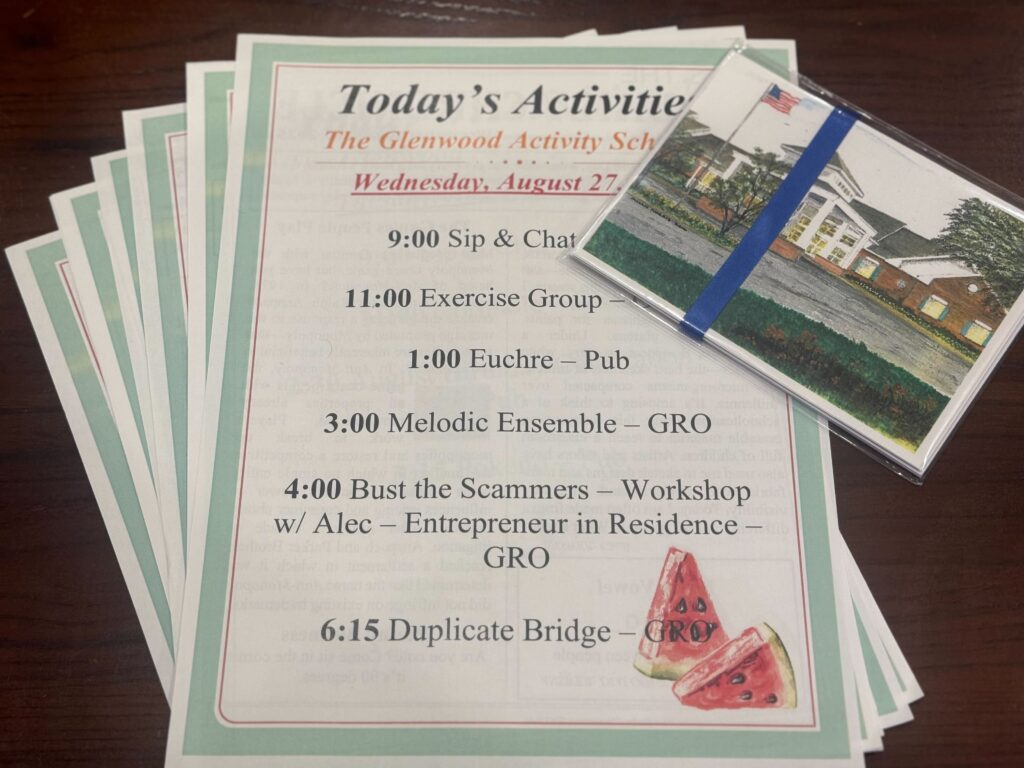Abstract
The digital transformation of government services has intensified over the past three decades, but many older adults remain more familiar with mobile apps than web-based services, and often prefer in-person on phone-based help with accessing benefits. This article explores findings from interviews with 40 immigrant older adults on how they manage their public and government benefits.
Key Words
Social Security, digital, services, web-based engagement, mobile apps, distrust, community services
More than 3 decades ago, the United States was among the early adopters of digital government service delivery, a model that has since gained traction among local governments nationwide. The 3-year COVID-19 pandemic further accelerated this digital shift, elevating the full digital transformation of public services to a top national priority (Martorana, 2023).
As we move through 2025, the push for digital transformation in government services has only intensified. Federal agencies, including the Social Security Administration, have publicly committed to becoming “digital-first organizations” (Heckman, 2025). This shift is happening alongside downsizing the federal workforce, which is expected to reduce the availability of phone-based and in-person services (Heckman, 2025). Together, these trends signal a new era in public service delivery, where one’s ability to effectively navigate the internet and online systems will become increasingly essential.
Nevertheless, the success of digital services does not depend only upon the government’s decision to supply these services but also upon citizens’ willingness to use them (Al-Ma’aitah, 2019). Older adults are disproportionately affected by the digital divide, facing challenges in accessing and using technology (Finkelstein et al., 2023). Thus, the design of said digital services, particularly those offered by agencies like the Social Security Administration that primarily serve older adults, must consider this demographic’s challenges and needs. Moreover, the digital divide does not affect all older adults equally. Older immigrants may encounter unique barriers that are frequently overlooked in policy and technology research.
As a part of the New York Retirement and Disability Research Center, the Brookdale Center for Healthy Aging has always had a keen interest in understanding older adults’ technology use in our rapidly digitalizing society. In 2021, we conducted a study examining tech use among a group of immigrant elders, many of whom were foreign-born (Finkelstein et al., 2023). The findings revealed that while participants engaged in a variety of digital activities, the use of online services for managing public and government benefits was limited, despite widespread social distancing policies at the time. We suspected that barriers to adopting online service management may extend beyond technical challenges to include attitudinal factors as well.
Funded by the Retirement and Disability Research Center Award, we designed the current project to build on that earlier work by examining in-depth how Chinese- and Spanish-speaking immigrant older adults engage with and perceive online Social Security Services.
‘Despite widespread smartphone and mobile app usage among participants, engagement with web-based services remains notably low.’
We held four focus groups with 40 immigrant older adults in New York City, each lasting 90 minutes. Because many older adults get help with managing their benefits, we also interviewed seven case workers who support them, each interview lasting around 45 minutes. All participants were compensated for their time. All sessions were recorded, transcribed, and analyzed to identify common themes.
What was surprising is that, contrary to the popular belief that older adults are a digitally illiterate group, we found that older adults’ digital engagement is not low. Participants exhibit heterogeneous use of technology. Most of the participants owned smartphones and engaged in a range of online activities, including online communication and information consumption (WeChat, WhatsApp, Facebook), entertainment (YouTube, online games) and wellness apps. Nevertheless, reports on using e-government platforms and applications remain particularly low due to three major challenges.
Challenge 1: Web-Based Engagement Remains Challenging
Despite widespread smartphone and mobile app usage among participants, engagement with web-based platforms remains notably low. This is a significant finding given that the only available Social Security app is for the purpose of wage reporting only. Most other digital Social Security services, such as retirement benefit management and information delivery (which are more relevant to retired older adults), are primarily web-based.
Several barriers contribute to this limited use. First, the cost of accessing web platforms, including the expense of computers, laptops, and reliable internet service, poses a substantial obstacle. In addition, accessibility issues, such as limited features for users with vision impairments, make websites difficult to navigate for some.
For many older adults, smartphones were their first exposure to digital technology, and as a result, they tend to feel more comfortable with mobile apps than with traditional web platforms, often carried by laptops and computers, which remain unfamiliar and often intimidating. Additionally, existing research also shows that touchscreen interfaces are often considered more intuitive than mouse-guided interactions because they allow for direct physical engagement with on-screen elements (Harada et al., 2013).
In our study, participants expressed openness to using digital Social Security services for managing retirement benefits and accessing information if these services are delivered through mobile apps. However, the design of such app-based platforms must prioritize equity by integrating accessibility features like voice assistants and screen readers tailored to older adults.
More importantly, we recommend that the Social Security Administration adopt a user-centered design approach that actively involves older adults, especially those from immigrant backgrounds, throughout the design and development process to ensure their unique needs are fully addressed.
Challenge 2: Distrust in Online Spaces for Personal Information Sharing and Monetary Transactions
One of the core functions of the digital Social Security Administration service is to help beneficiaries manage their benefits. This includes tasks such as updating bank account information and understanding changes to their benefits. However, this process inevitably involves sharing sensitive personal and financial information, something that many participants deeply distrust. This distrust is especially pronounced when it comes to digital SSA platforms, largely due to the high stakes associated with retirement benefits involved and a history of exposure to fraud.
Many participants shared past experiences with scams, such as receiving fraudulent phone calls requesting their Social Security numbers or receiving text messages falsely claiming benefit changes in attempts to steal credit card information. Overall, despite being highly aware and vigilant about ongoing fraud, participants reported low confidence in their ability to accurately identify and avoid online scams.
As a result, many intentionally avoided engaging with digital service platforms, especially those involving personal information or financial transactions. Here are two sample questions and answers regarding fraud fears.
[If Social Security improved online services, what would you need to feel more secure?]
“It’s difficult because there’s already a lack of trust. There are too many hacks and frauds.”
[If Social Security improved online services, what would you need to feel more secure?]
“But I am just scared to download anything. There are too many scams.”
Participants consistently expressed a strong preference for in-person service delivery. Face-to-face interactions were seen as more trustworthy, offering personalized assistance, immediate answers, and a sense of control that digital systems often lack. Common sentiments included, “It’s safer to see the person you’re dealing with,” and “I prefer direct interaction with SSA staff.”
However, traditional service delivery channels are not without challenges. Participants frequently reported frustrations with long wait times, both on the phone and during in-person visits, which often hinder timely access to the support they need.
Challenge 3: Existing Challenges Further Complicated by Language Barriers
The technical and attitudinal barriers to using digital services are further compounded by language challenges, particularly among Chinese-speaking participants. Most reported limited proficiency in English, which significantly hindered their ability to navigate government websites. Participants expressed frustration that many of these websites, including the Social Security Administration’s, are either not translated at all or are translated poorly.
As one Chinese-speaking participant noted, “Government websites don’t have Chinese, and when they do, the translations are poor.” This lack of accessible, high-quality language support adds another layer of exclusion for non-English-speaking users.
Moving Forward
The ongoing development of digital platforms must accommodate the physical, social, and cognitive needs of older adults. Given the prevalent use of and comfort with smartphones among older adults, as demonstrated in this study, the Social Security Administration could consider converting its digital services to an app-based format. Several accessibility features could be considered, which include an organized layout, adjustable fonts, high-quality translation services, as well as integration of a chatbot and voice assistant option to ease their navigation. We also advocate for a user-centered approach to the technology design of e-government applications, involving older adults in the design process of technologies.
‘Older adults’ distrust in digital government services is driven by a broader distrust in the internet, which is further deepened by the prevalence of government-impersonating scams.’
To address older adults’ heightened concerns about privacy, all Social Security digital services should feature clear, easy-to-understand privacy statements that are prominently displayed and easily accessible. Additionally, continued efforts to combat scams and fraud are crucial, as concerns about online security remain a significant barrier to digital adoption.
Ongoing investment in digital initiatives should not come at the expense of in-person and phone-based services. The study findings reveal that older adults’ distrust in digital government services is driven by a broader distrust in technology, which is further deepened by the prevalence of Social Security scams. Participants demonstrate continued desire to engage with traditional service delivery channels. This finding aligns with a substantial body of existing literature on older adults’ preferences for service access and communication (Butrica & Schwabish, 2025; Henly et al., 2023).
While digitalization of public services has great potential in improving the efficiency of service delivery, our findings also highlight the need to recognize that not everyone has the trust in or ability to use such services meaningfully. Therefore, while the Social Security Administration should continue to enhance its digital platforms, it is equally important to maintain and improve the availability and quality of traditional, in-person, or phone-based support to ensure all beneficiaries can effectively engage with the system.
In fact, strengthening partnerships between the Social Security Administration and community centers through in-person workshops and teach-ins may strengthen immigrant older adults’ trust in and willingness to adopt digital Social Security Services. The overall digital engagement among the participants was not low, and some of them demonstrated the capability and potential to effectively use digital services. Digital government services that offer real-time processing have the potential to help older adults access more cost-effective, streamlined information and service management. However, they still prioritized in-person services as a way to build trustworthy relationships. By investing resources into hosting tailored in-person workshops and presentations in community centers, the Social Security Administration can foster a trustworthy environment around benefits management, where older immigrant adults feel supported.
Yiyi Wu, MA, is a full-time research associate at the Brookdale Center for Healthy Aging at Hunter College, and a part-time doctoral student in Information Science at Rutgers University in New Jersey. christian gonzález-rivera, MUP, is director of Strategic Policy Initiatives at the Brookdale Center for Healthy Aging at Hunter College, CUNY in New York City. Christopher Ho directs the Citywide Caregiver Program at Hamilton-Madison House in New York City. Ruth K. Finkelstein, ScD, is Rose Dobrof Executive Director of the Brookdale Center for Healthy Aging at Hunter College and Professor of Public Health at Hunter College/CUNY.
Photo credit: Shutterstock/franz12
References
Al-Ma’aitah. (2019). Drivers of e-government citizen satisfaction and adoption: The case of Jordan. International Journal of E-Business Research, 15(4), 40–55. https://doi.org/10.4018/IJEBR.2019100103
Butrica, B., & Schwabish, J. (2025). Social Security office closures will hurt rural and tribal communities. Urban Institute. https://www.urban.org/urban-wire/social-security-office-closures-will-hurt-rural-and-tribal-communities
Finkelstein, R., Wu, Y., & Brennan-Ing, M. (2023). Older adults’ experiences with using information and communication technology and tech support services in New York City: Findings and recommendations for post-pandemic digital pedagogy for older adults. Frontiers in Psychology, 14, 1129512. https://doi.org/10.3389/fpsyg.2023.11295
Harada, S., Sato, D., Takagi, H., & Asakawa, C. (2013). Characteristics of elderly user behavior on mobile multi-touch devices. In P. Kotzé, G. Marsden, G. Lindgaard, J. Wesson, & M. Winckler (Eds.), Proceedings of the 14th IFIP TC 13 International Conference on Human-Computer Interaction (pp. 323–341). Springer Berlin, Heidelberg. https://link.springer.com/chapter/10.1007/978-3-642-40498-6_25
Heckman, J. (2025). SSA chief expects no mass layoffs to get to ‘right level of staffing,’ calls on DOGE to drive ‘digital-first’ agency. Federal News Network. https://federalnewsnetwork.com/workforce/2025/05/social-security-commissioner-has-no-intent-to-rif-people-looks-to-ai-to-speed-up-work/
Henly, M., Brucker, D., Houtenville, A., & Nye-Lengerman. (2023). Barriers and communications preferences of rural populations: A scoping review. Michigan Retirement and Disability Research Center at University of Michigan. https://mrdrc.isr.umich.edu/project/barriers-and-communications-preferences-of-rural-populations-a-scoping-review/
Martorana, C. (2023, September 22). Why the American people deserve a digital government. https://bidenwhitehouse.archives.gov/omb/briefing-room/2023/09/22/why-the-american-people-deserve-a-digital-government/#:~:text=Websites%20and%20digital%20services%20will%20work%20with%20assistive%20technology%20so,that%20works%20best%20for%20you.













